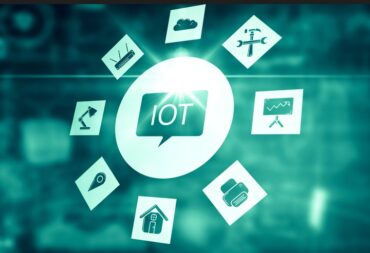
Building a real-time visual intelligence system requires the tight integration of multiple architectural elements, including those that perform edge processing, visual analytics, and more.
In today’s data-driven world, manufacturers are seeking faster, smarter ways to improve operational efficiency, ensure safety, and make real-time decisions. One of the most promising tools to help them achieve these goals is real-time visual intelligence. But building a system that delivers actionable insights from live video streams and sensor data in real time requires a complex, well-orchestrated architecture composed of multiple integrated components.
To that end, the first layer of any visual intelligence system is data acquisition. This starts with the observation systems—cameras and sensors strategically placed across a facility to capture rich, real-world data in real time. These devices monitor physical spaces, machinery, people, and products to generate a continuous stream of visual and environmental information.
Advanced IP cameras can now capture high-resolution video streams and, when equipped with built-in AI, can even perform preliminary tasks like motion detection or basic object recognition before passing the data downstream.
But as useful as these devices are, the raw data they generate is massive—and this is where the real challenge begins.
Architectural Element 1: Edge Processing
To meet the demands of real-time response, much of the data must be processed as close to the source as possible. This is where edge computing enters the architecture.
Edge devices—such as small form-factor computers or intelligent cameras—perform preliminary processing, filtering, or analytics locally without sending all raw data to the cloud. This drastically reduces latency, conserves bandwidth, and helps deliver insights in milliseconds rather than seconds or minutes.
For example, an edge device might detect a safety violation—like a person entering a restricted area—and trigger an immediate alert or system response without waiting for cloud-based validation.
Edge processing is especially critical in time-sensitive environments like manufacturing lines, where even a few seconds of delay can lead to costly errors or safety risks.
Architecture Element 2: Visual Analytics
Many video systems offer advanced features like motion detection and the ability to differentiate one object from another (e.g., a passing squirrel vs. a human). But a real-time visual intelligence system requires much more.
What’s needed is the ability to turn the raw video into structured, actionable data using visual analytics. Such a solution typically uses an AI-driven layer that analyzes video streams to detect, classify, and interpret what’s happening in real time.
A solution should provide the ability to:
- Detect and track objects (people, vehicles, machinery)
- Recognize behaviors and anomalies (loitering, line crossing, erratic motion)
- Apply customizable rules (e.g., trigger alerts when a forklift enters a loading bay unexpectedly)
- Conduct forensic searches across hours of video using metadata
These analytics can be deployed both at the edge and in the cloud, depending on system requirements. With flexible integration capabilities, visual analytics engines can also incorporate third-party modules for domain-specific tasks—such as quality control on an assembly line or inventory movement tracking in a warehouse.
See also: Escaping the Data Storage Trap in Real-time Visual Intelligence
Architectural Element 3: Ultra-Low-Latency Processing
Even the best analytics are useless without a responsive decision engine to act on them. What’s needed is an ultra-low-latency data processing platform designed specifically for environments where decisions must be made within milliseconds. Such a platform must be able to ingest streaming data, apply logic, and output actions. Key features include:
- In-memory processing: Ensures that data can be accessed and manipulated quickly, without slow disk reads or writes.
- Minimal data movement: Processes data within a single layer to reduce system lag and complexity.
- Optimized data structures: Speeds up retrieval and evaluation of relevant data for real-time decisions.
Combined, such features enable real-time visual intelligence. For example, if a machine part begins to vibrate abnormally, the anomaly can be detected by sensors and video analytics and then passed to the processing layer. Within milliseconds, the system can initiate a sequence: flag the maintenance system, alert operators, slow down machinery, and log the event—all without human intervention.
Architectural Element 4: Messaging and Connectivity
For real-time visual intelligence to be effective, data must flow freely between all system components: edge devices, analytics engines, cloud services, control systems, and enterprise applications. What’s needed is a robust IoT messaging and connectivity layer.
This architectural component essentially routes data from observation points to processing engines and back to operational systems. It must be:
- Secure: Protecting sensitive industrial data from external threats
- Efficient: Minimizing overhead to preserve real-time performance
- Scalable: Supporting thousands of data points and endpoints as the system grows
MQTT, Kafka, or other lightweight messaging protocols are often used here, depending on the latency and bandwidth requirements of the use case.
Additional Elements: Cloud Intelligence and Long-Term Analysis
While real-time processing happens at the edge and in memory, long-term value also comes from the cloud layer—where data can be aggregated, stored, and analyzed over time.
This component supports use cases like:
- Predictive maintenance through trend analysis
- Process optimization using historical performance data
- Strategic planning by integrating visual data with ERP, MES, or BI platforms
Machine learning models can also be trained and refined in the cloud, then deployed back to edge devices for real-time use—creating a powerful feedback loop between real-time intelligence and strategic insights.
Bringing It All Together
The final piece of the puzzle is integration with action systems. Once an insight is generated, it must be actionable. This could mean triggering:
- An alert to human operators
- A command to a control system (e.g., shut down a line)
- A notification to an enterprise system (e.g., log a maintenance ticket)
The key is closing the loop—turning insight into action within milliseconds to improve outcomes, reduce downtime, and prevent accidents or defects.





